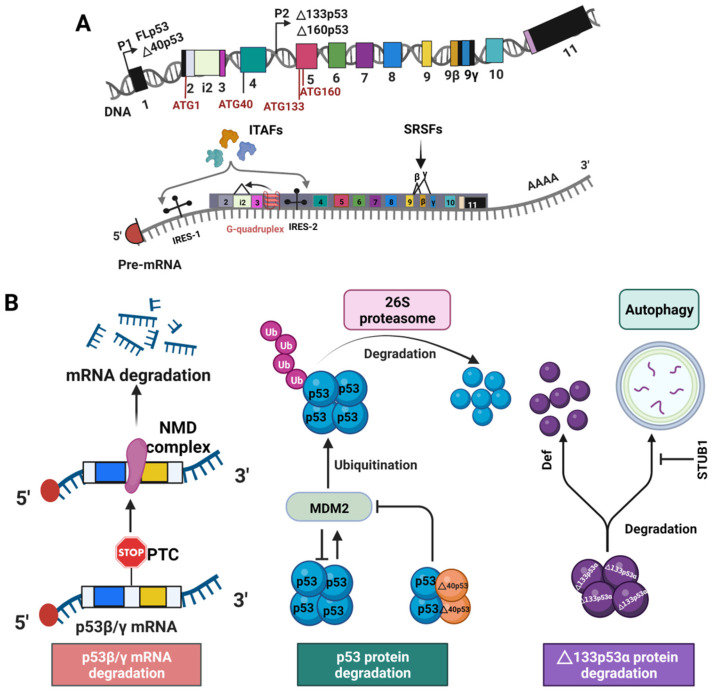Figure 2.
Expression of the p53 isoforms is regulated by different mechanisms. (A) Regulation at the levels of transcription and translation. At the transcriptional level, alternative promoter usage (P1 and P2) lead to the production of mRNAs for different p53 isoforms. Moreover, alternative splicing (Λ) of the introns i2 and i9, guided by G-quadruplex structures and serine/arginine-rich (SR) splicing factors (SRSFs), respectively, govern expression of the p53 N- and C- terminal variant isoforms. In addition, two distinct internal ribosome entry sites (IRESs) under action of the IRES-interacting trans-acting factors (ITAFs) can modulate the expression of p53 and Δ40p53 at the level of translation. (B) The degradation mechanisms of p53 and its isoforms. Nonsense-mediated decay (NMD) degrades the p53β and p53γ mRNAs post-transcriptionally. The MDM2-mediated ubiquitination-26S proteasome pathway degrades wild-type p53. Δ40p53 forms a heterotetramer with p53, which prohibits MDM2-mediated degradation. Proteasome-independent degradation pathways, such as the digestive organ expansion factor (Def) protein-mediated pathway and autophagy, can degrade Δ133p53α. STUB1, a chaperone-associated ubiquitin ligase, can protect Δ133p53α from autophagic degradation.

